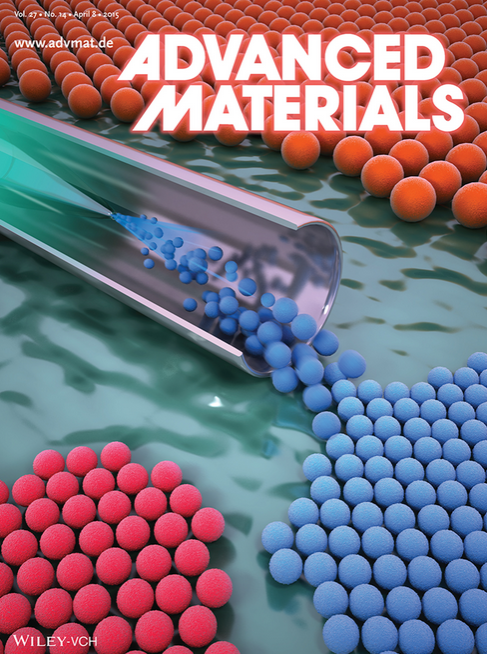If you were a child of the ’80s then you likely recall watching Terminator 2 in awe at the special effects of the time. I probably watched the movie about 30 times between 1992 and 1996,  oftentimes pausing, rewinding, and rewatching the part in which the T-1000 liquid metal robot is blown to pieces, and then slowly reforms itself from a puddle of melted metal.
oftentimes pausing, rewinding, and rewatching the part in which the T-1000 liquid metal robot is blown to pieces, and then slowly reforms itself from a puddle of melted metal.
Later in life, I often wondered how realistic something like that could be sometime in the future. I’m certainly no robotics expert or material scientist, but recent research out of Purdue University seems to suggest we could one day be 3D printing all sorts of interesting liquid metal objects (hopefully no T-1000s).
In a paper, which will be published on April 18th in the journal Advanced Materials, authors Dr. Rebecca K. Kramer, John William Boley, and Edward L. White describe a method of printing objects such as soft robotics, wearable gadgets, and other flexible electronics using a liquid metal alloy. The process, which they call mechanically sintered gallium-indium nanoparticles, would enable all sorts of incredible electronics, perhaps one day even something similar to a T-1000 (it will of course be protecting humanity though).
“We want to create stretchable electronics that might be compatible with soft machines, such as robots that need to squeeze through small spaces, or wearable technologies that aren’t restrictive of motion,” stated Rebecca Kramer, an assistant professor of mechanical engineering at Purdue University. “Conductors made from liquid metal can stretch and deform without breaking.”
Researchers have already been able to print flexible metal alloy conductors into garments, as well as into other elastic materials. They will need to conduct further research and figure out new manufacturing methods before something like this is viable on a mass manufacturing level.
The way that the printing process works is rather interesting. First the ink is produced by mixing the liquid metal alloy in a non-metallic solvent using ultrasound. The vibrations caused by the ultrasound equipment break up the metal into miniscule nanoparticles. Basically the ink is now filled with tiny nanoparticles, but is still able to be sprayed out of an inkjet cartridge, which before this process was impossible.
“Liquid metal in its native form is not inkjet-able,” Kramer explained. “So what we do is create liquid metal nanoparticles that are small enough to pass through an inkjet nozzle. Sonicating liquid metal in a carrier solvent, such as ethanol, both creates the nanoparticles and disperses them in the solvent. Then we can print the ink onto any substrate. The ethanol evaporates away so we are just left with liquid metal nanoparticles on a surface.”
Once printed, the liquid metal nanoparticles now have to be rejoined. They do this by applying light pressure to the material. In a process that I  imagine is visually similar to tiny drops of oil coming together in water, only on a much smaller scale, the material is then rendered electrically conductive. What’s even more incredible about this method is that the researchers were able to select which areas of the material become conductive based on the path in which they place the pressure.
imagine is visually similar to tiny drops of oil coming together in water, only on a much smaller scale, the material is then rendered electrically conductive. What’s even more incredible about this method is that the researchers were able to select which areas of the material become conductive based on the path in which they place the pressure.
“We selectively activate what electronics we want to turn on by applying pressure to just those areas,” said Kramer.
As mentioned above, researchers still have a lot of work to do. If the material can be printed via an inkjet device, then it is entirely possible that it could be printed on an inkjet-style 3D printer as well. Of course there may be flow issues that would need to be overcome as the stacking takes place. Regardless, such technology could lead the way in an electronics industry that is slowly disappearing into the environment around us.
What do you think of this research? What possible future applications for printed liquid metal can you think of? Let us know in the Printed Liquid Metal forum thread on 3DPB.com.
Subscribe to Our Email Newsletter
Stay up-to-date on all the latest news from the 3D printing industry and receive information and offers from third party vendors.
You May Also Like
Printing Money Episode 17: Recent 3D Printing Deals, with Alex Kingsbury
Printing Money is back with Episode 17! Our host, NewCap Partners‘ Danny Piper, is joined by Alex Kingsbury for this episode, so you can prepare yourself for smart coverage laced...
Insights from Cantor Fitzgerald on AM’s Q1 2024 Landscape
A recent survey by Cantor Fitzgerald sheds light on the persistent challenges within the additive manufacturing (AM) industry in the first quarter of 2024. Based on responses from 38 industry...
3D Printing Financials: Xometry’s Scaling up and Strong Start to 2024
Xometry (Nasdaq: XMTR) kicked off 2024 with strong results, boosting its marketplace and technology to new heights. Both revenue and gross margin soared, fueled by an expanding global network of...
3D Printing Financials: Desktop Metal Targets Recovery Amid Net Losses and Revenue Downturn
Despite facing a decline in revenue and the persistent challenges of a tight economic climate, Desktop Metal (NYSE: DM) is making strides toward operational efficiency. The first quarter of 2024...


































